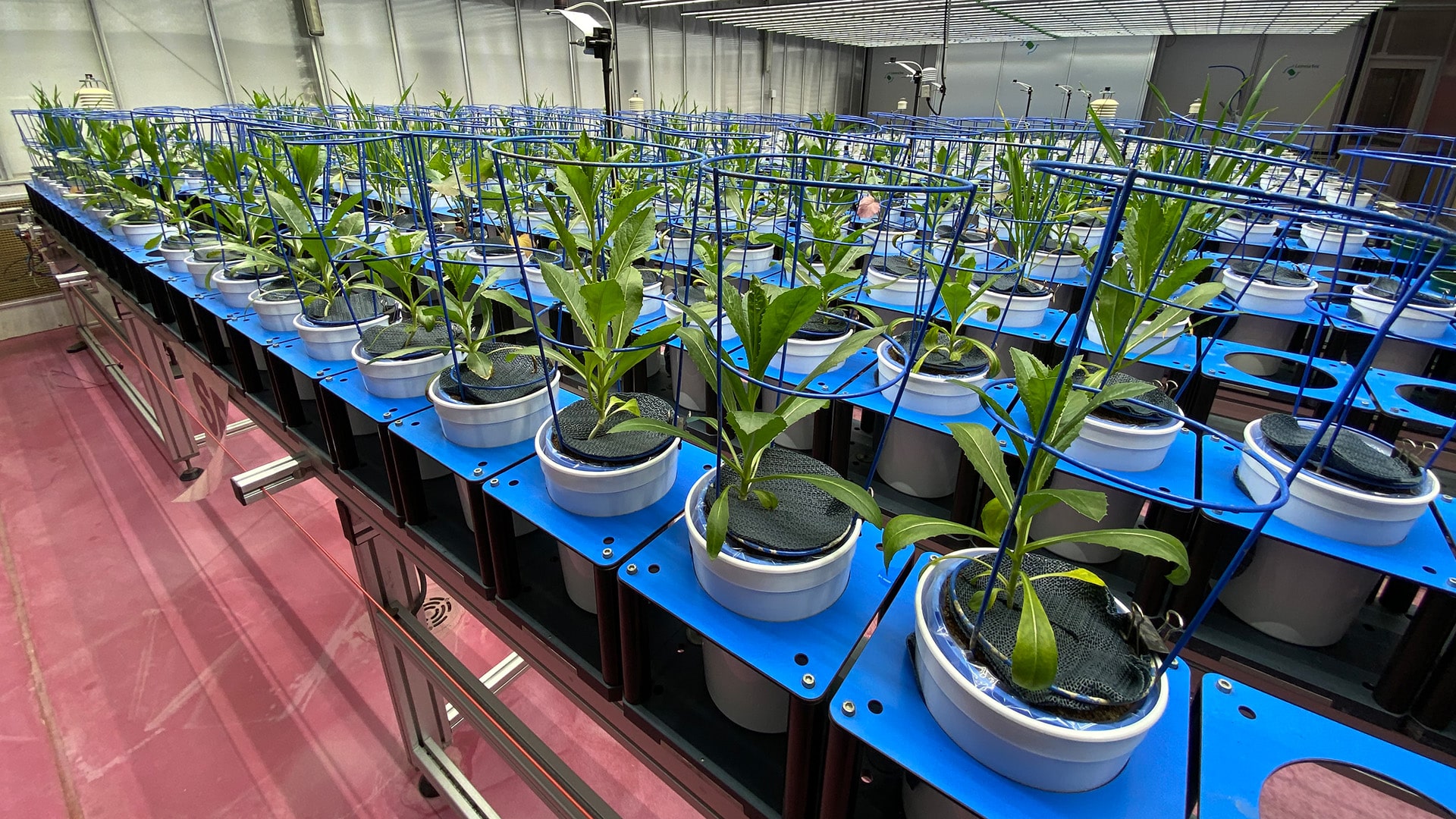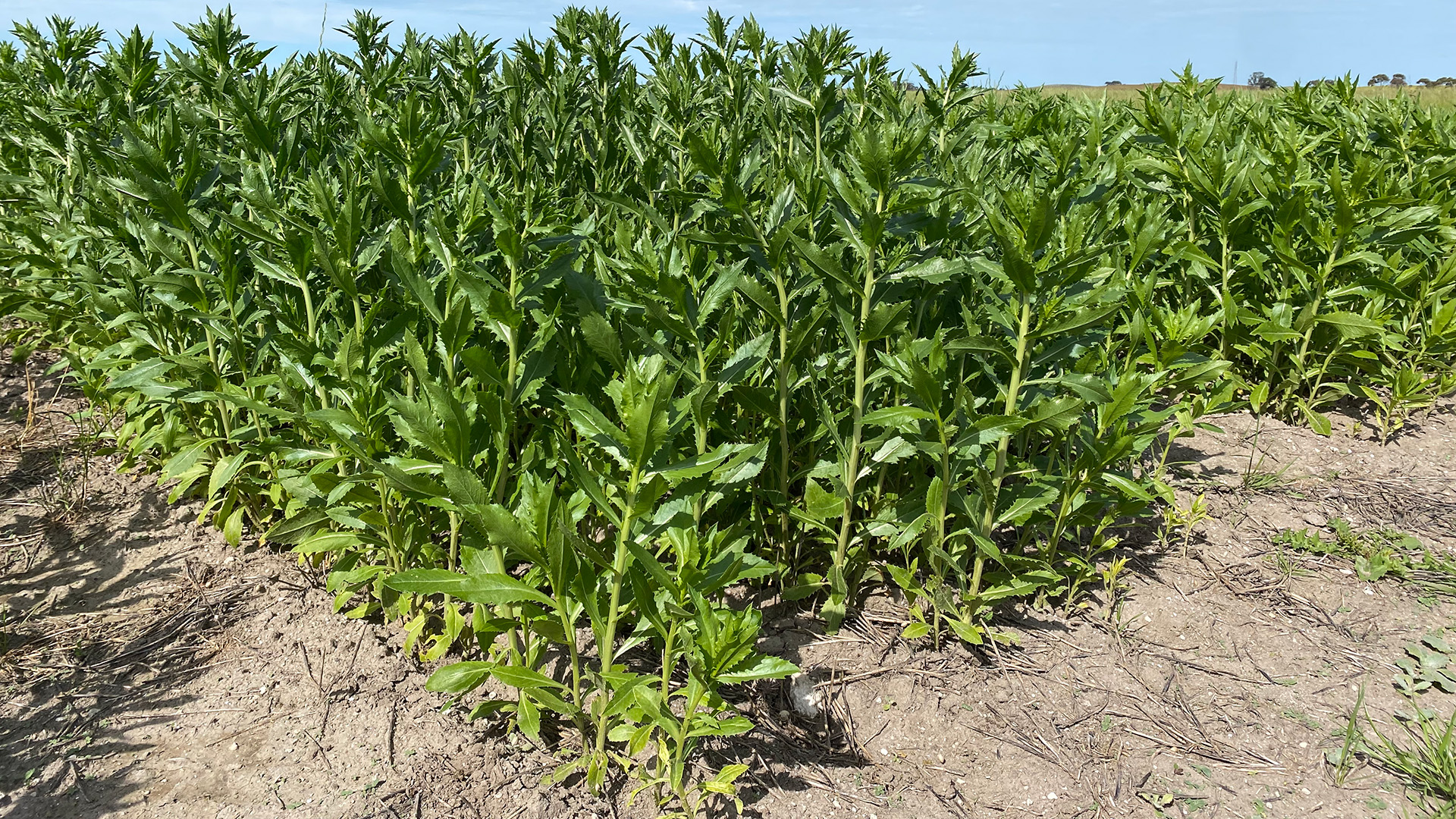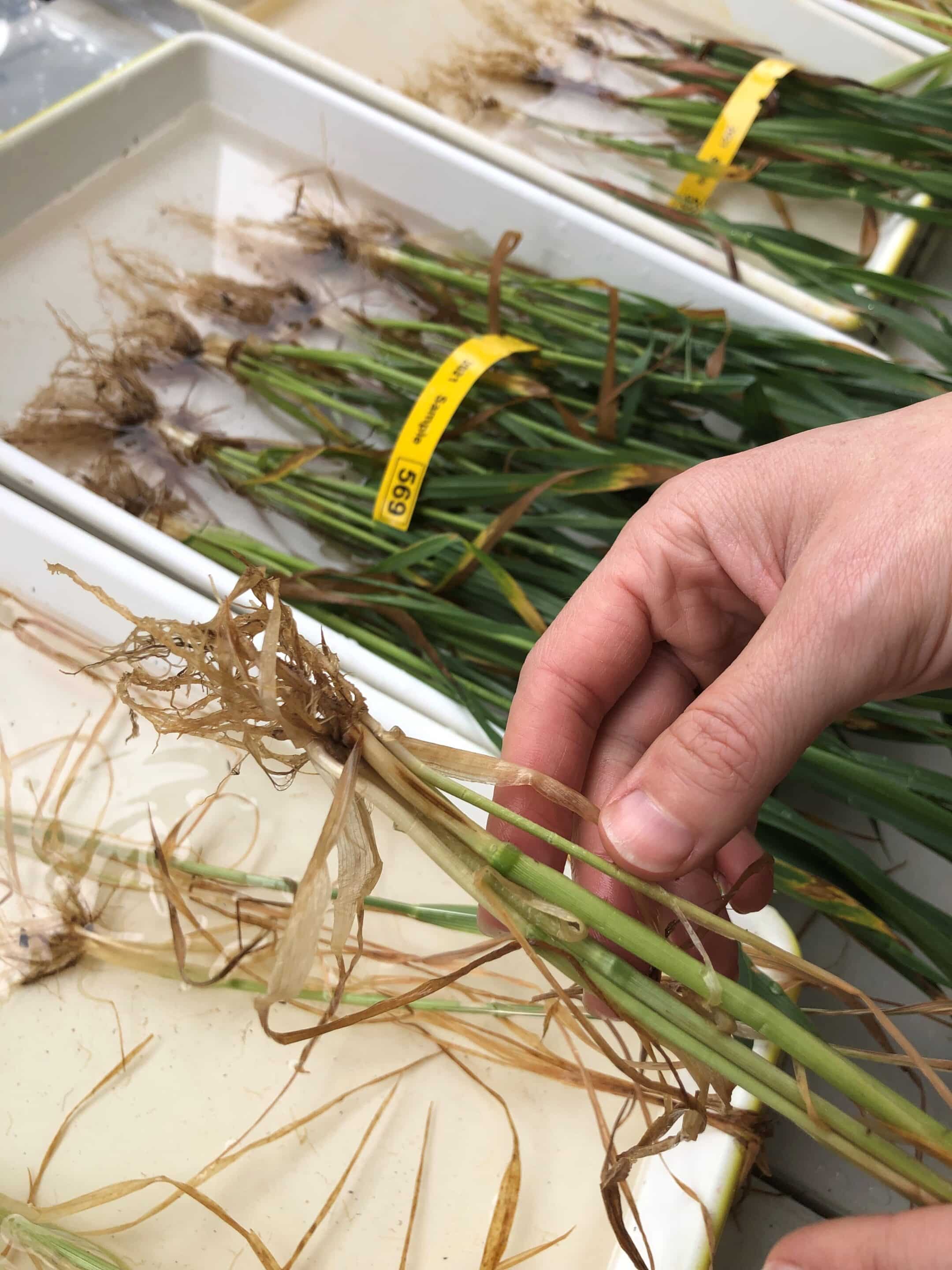START
FINISH

Summary
To assess salinity and sodicity tolerance in safflower, several cultivars, including genetically modified (GM) lines, were grown in high and low saline soil conditions in the field, and sodic and control soil in a controlled environment.
Emergence was delayed in the high saline soil compared to low saline conditions in the field but there was little difference in plant vigour or grain oil content between high and low saline plots. The sodic soil trials showed reduced biomass in plants grown in sodic soils compared to lines grown in the control soil, with variations that will be useful for selecting more sodic tolerant safflower lines in the breeding program.
Background
The SA Grain Industry Blueprint has highlighted the need for a tenfold increase in the production of specialty oils in SA from around 2,000 tonnes to 20,000 tonnes.
With the lifting of the South Australian moratorium on genetically modified crops, growers can now choose commercially available super high oleic acid (SHO) safflower (Carthamus tinctorius L.) varieties as a non-canola oilseed.
Growers in NSW and Victoria have observed that safflowers appear tolerant to sodic and saline soils. However, there have been limited trials to test the level of sodicity and salinity tolerance in SA.
Research Aims
The core objectives of the project were to:
- Evaluate and demonstrate the role of safflower (including SHO lines) in saline soils.
- Conduct a pilot experiment to determine the level of tolerance of safflower lines to sodic soils.
In The Field
A field trial was initiated by the SARDI Waite Agronomy team on low and high salinity plots at Coomandook in 2021, however this was abandoned due to a very dry season impacting on safflower establishment in highly saline soil. The trial was re-established in 2022 in a high rainfall season and grown through to harvest.
This trial tested 10 lines in low salinity soil and seven lines in high salinity soil, with sowing completed on 16 June 2022, shortly after a rain event. Plants were at second leaf stage by 30 June but emergence was often late in high saline soils.
Shoot biomass was collected from each plot on 13 September 2022 and dry weights recorded. Whole shoots were analysed using inductively coupled plasma (ICP) mass spectrometry. The plots were grown to maturity and harvested in January 2023.
A separate experiment at The Plant Accelerator® Smarthouse compared sodic soil and a control soil, with six replicate pots per treatment growing eight SHO safflower, one canola (Binto) and one wheat (Mace) lines. These trials used field soil amended with high sodium, boron, aluminium and alkaline pH to represent typical SA sodic soils and unamended for the control.
Results
At Coomandook (2022) plant establishment was lower in the safflower E40-R, SH0181, SH0441 and SHO557 lines, compared to the advanced breeding lines X3242-2-1, X3242-4-1, X3290-1-2-1, X3403-7-3-1-1 and AGRI101-F1, which had better establishment and higher visual vigour scores.
The high salinity site tended to have higher biomass than the low salinity sites for the SHO441 and X3242-2-1 lines, probably due to those safflowers accessing legacy nutrients in the soil. There was no difference in biomass between saline and non-saline sites in the E40-R, SH0181, SHO557, X3242-4-1 and X3290-1-2-1 lines.
Shoot tissue analysis showed higher concentrations of sodium and potassium, but not chloride, in the SHO high salinity plots compared to the low salinity plots. This confirmed high salinity and indicated safflower may be an effective sodium excluder. Safflower in high salinity soils showed increases in shoot molybdenum, boron and potassium percentages, and a significant decrease in shoot calcium percentage, compared to the low salinity soil.
Differences in biomass did not translate to differences in grain yield with nearly all lines (except X3290-1-1-2) having higher grain yield in high salinity soil compared to low salinity soil due to the high rainfall year.
In the Smarthouse experiment conducted at The Plant Accelerator®, sodic soil reduced the growth of all crops relative to the control. This variation was apparent in the safflower lines from 35 days after planting and ranged from 41 to 60 per cent across the lines. This variation was 62 per cent for canola and 67 per cent for wheat.
Project Participants
SARDI: Associate Professor Rhiannon Schilling, SARDI Waite Agronomy
GO Resources: David Hudson
APPF The Plant Accelerator®: Associate Professor Bettina Berger, Dr Nathaniel Jewell
Grower: Tim Freak
The Problem
Increasing SA’s production of speciality oils will require evaluation of new, high yielding oilseed crops on sub-optimal soil types.
The research
This project evaluated the viability of genetically modified safflower for non-canola oilseed cropping under saline and sodic soil conditions.
More information
Associate Professor Rhiannon Schilling, SARDI/University of Adelaide
T: 08 8429 2926
E: [email protected]
Value for Growers
This project has revealed the strong potential for profitable SHO safflower production in sodic and saline soils of SA, at least under conditions of high soil moisture. With further research across a wider range of saline growing conditions, better knowledge of optimal agronomic management, and the continued development of more vigorous cultivars, safflower could be a valuable oilseed crop for SA growers.
Latest Research Projects




